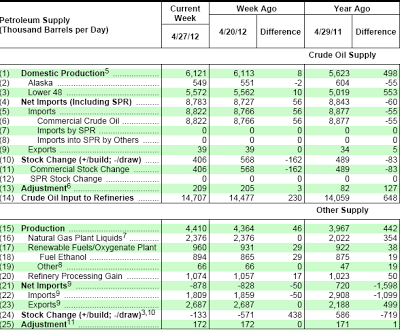LUKOIL sealed a 20-year deal to develop the virgin West Qurna Phase-2 oilfield in an auction in December 2009, pledging to boost output to a plateau target of 1.8 million bpd in six years.
LUKOIL said in a statement that drilling operations at five well pads would occur simultaneously and that wells would be as deep as 5,000 metres. It said total investment in the field would be around $25 billion.
“Production from the oilfield will reach 150,000 barrels per day by the end of 2013 and increase steadily to 500,000 barrels in the second half of 2014,” Sergei Nikiforov, a vice president for development and production at LUKOIL told reporters at West Qurna, 80 km (53 miles) north of the southern oil city of Basra.
West Qurna-2 is the world’s second-largest undeveloped field with recoverable oil reserves of around 14 billion barrels, according to LUKOIL.
2. Iraq sees production from its southern oilfields reaching 2.75 million barrels per day (bpd) by the end of the year as the country [an increase of 600,000 barrels per day from now], expected to be the world’s biggest source of new oil supplies over the next few years, pushes to increase output.
Iraq’s biggest field Rumaila, operated by BP, is currently producing 1.316 million bpd and is expected to boost output by 250,000 bpd in the second half of this year, Dhiya Jaffar, head of the state-run South Oil Co. said.
We expect production from Basra oilfields will increase from 2.15 million barrels per day to 2.75 million barrels per day by the end of this year,” he told a news conference in the southern oil-rich city of Basra.
Iraq aims to double its output over the next three years as it recovers after years of sanctions and war. Last month, the country’s oil production rose above 3 million bpd for the first time in more than three decades.
Jaffar said output at West Qurna One, currently at 406,000 bpd, was seen increasing by 100,000 bpd in the next six months while Zubair oilfield, also in the south, was producing 254,000 bpd and expected to increase by 100,000 bpd by the end of 2012.
3. US EIA weekly petroleum status report for April 27, 2012 (61 pages)
US crude oil and ethanol production edged up slightly.
4. Bloomberg – Byron Wien, the 79 year-old chairman of Blackstone Group LP’s advisory services unit, is forecasting an annual drop in oil prices for the first time in his career as swelling production pushes global inventories higher.
Wien, who joined the world’s biggest private-equity firm in 2009, said the U.S. will extract more crude by fracking rocks and expects the furor over a potential conflict with Iran to dissipate.
There’s a “lack of appreciation” of how much oil will be extracted from hydraulic fracturing, or fracking, of rock formations in the U.S., particularly North Dakota, Wien said. The state, home to the Bakken shale-rock fields, produced a record 558,255 barrels a day in February, its Department of Mineral Resources said.
Libya hopes to surpass its pre-rebellion output of 1.6 million barrels by June, Nuri Berruien, the head of state-run National Oil Corp., said in an April 25 interview in his office in Tripoli.
If you liked this article, please give it a quick review on ycombinator or StumbleUpon. Thanks

Brian Wang is a Futurist Thought Leader and a popular Science blogger with 1 million readers per month. His blog Nextbigfuture.com is ranked #1 Science News Blog. It covers many disruptive technology and trends including Space, Robotics, Artificial Intelligence, Medicine, Anti-aging Biotechnology, and Nanotechnology.
Known for identifying cutting edge technologies, he is currently a Co-Founder of a startup and fundraiser for high potential early-stage companies. He is the Head of Research for Allocations for deep technology investments and an Angel Investor at Space Angels.
A frequent speaker at corporations, he has been a TEDx speaker, a Singularity University speaker and guest at numerous interviews for radio and podcasts. He is open to public speaking and advising engagements.


